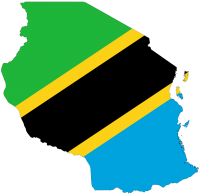The OEM is working to help stop the growth of counterfeiting in the African nation.
All Africa reported on HP’s work in Tanzania to help stem counterfeiting of products, including cartridges, being sold there. Noting that Africa is “increasingly being targeted as a market for counterfeit merchandise”, the site states that the continent is “being used as a transit route for fake goods”, which poses an “indirect threat to European and American markets”.
Highlighting HP’s work, the site stated that the OEM has, in the past five years, undertaken 1,600 investigations in the EMEA (Europe, Middle East and Africa), which have resulted in around 1,300 enforcement actions as well as confiscation of 11 million units of counterfeit products and components.
Focusing on Tanzania, the article comments that the country is facing its “fair share” of counterfeiting, with current legislation not defining substandard or counterfeit goods, meaning it “lacks specific and comprehensive laws to address” the issue. Additionally, other challenges including “corruption, lack of public awareness [and] insufficient human resources” have been a barrier to preventing counterfeiting.
The country’s government is said to lose between 540 and 900 billion shillings a year ($326.5 million/€239.9 million to $544.3 million/€399.8 million) to counterfeiting, with HP introducing both its holographic and QR code security on products in addition to online authentication technology. Tips the OEM has given to consumers include resisting offers to “sell empty print cartridge boxes, as they are used to disguise counterfeit print cartridges”, with only six percent of consumers knowingly buying illegal fakes.
Across Africa, HP has seen further success, with officials in Tanzania, Mozambique and Uganda seizing around 13,000 fake printer cartridges and components in 2013, whilst Kenyan and Ethiopian authorities raided sites to find around 2,500 counterfeit cartridges and components. Since 2008 the OEM has trained over 5,300 police and customs officers, 13,200 business partners and 1,500 corporate customers about how to identify and discover counterfeits.
Robert Ngugi, HP’s Supplies Channel Manager for West, East and Southern Africa, commented: “The latest labels provide a unique code which you can validate using a smart phone application, and this can be done by capturing the QR code printed on the label in order to access authentication. Please do not sell or give away empty packaging, because next time it could be you who pays the market price for a product you believe to be genuine, only to find that the HP box has been reused and a counterfeit is inside.”
Tina Rose, HP’s Anti-counterfeit Marketing Programme Manage for HP’s EMEA Printing and Personal Systems Group, added: “Counterfeiters harm manufacturers and customers by consistently undermining business standards and practices. Counterfeiting is bad news for everyone, as it dishonestly generates billions of dollars and threatens the reputation of global brands such as ours.
“It also harms consumers by creating low quality products with unknown chemicals which damages printers and could harm the environment.”
